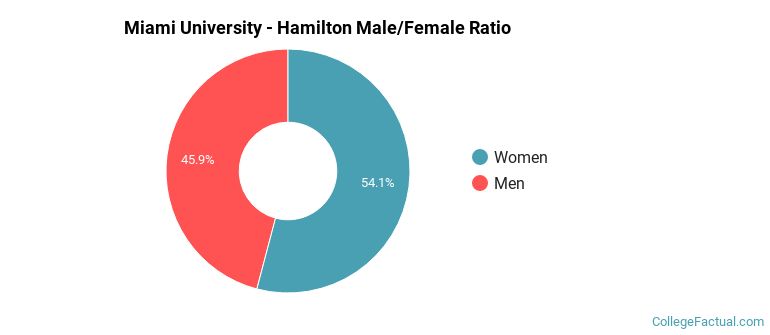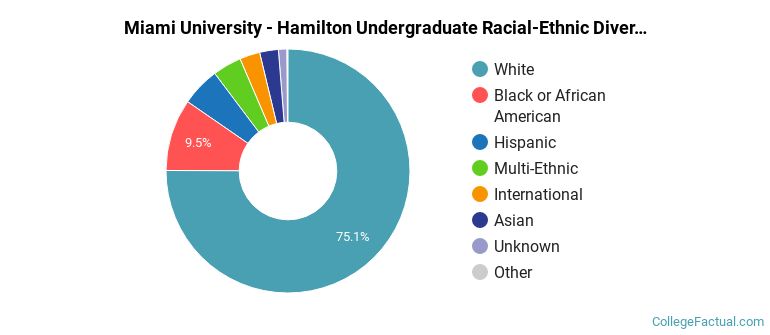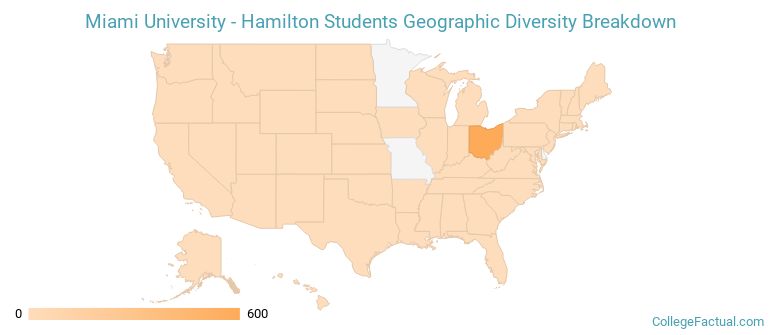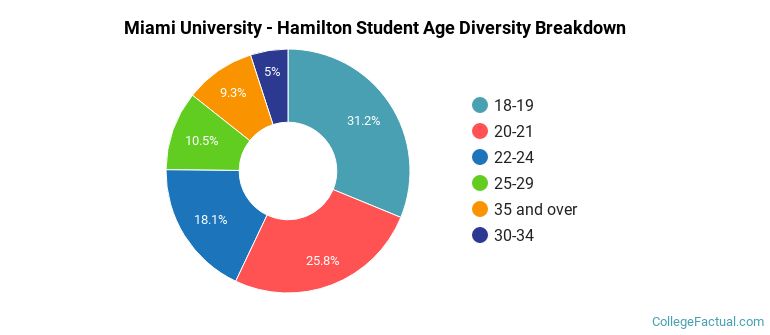 by our College Data Analytics Team
by our College Data Analytics TeamMiami University - Hamilton total enrollment is approximately 2,451 students.
Male/Female Breakdown of Undergraduates
The full-time Miami University - Hamilton undergraduate population is made up of 53% women, and 47% men.

For the gender breakdown for all students, go here.
Miami University - Hamilton Racial/Ethnic Breakdown of Undergraduates

| Race/Ethnicity | Number |
|---|---|
| White | 1,234 |
| Black or African American | 135 |
| International | 105 |
| Hispanic | 76 |
| Multi-Ethnic | 68 |
| Asian | 41 |
| Unknown | 22 |
| Native Hawaiian or Pacific Islander | 0 |
See racial/ethnic breakdown for all students.

| Race/Ethnicity | Number |
|---|---|
| White | 1,793 |
| Black or African American | 226 |
| Hispanic | 118 |
| International | 108 |
| Multi-Ethnic | 100 |
| Asian | 60 |
| Unknown | 41 |
| Native Hawaiian or Pacific Islander | 0 |

There are approximately 1,257 female students and 1,194 male students at Miami University - Hamilton.
Miami University - Hamilton ranks 1,880 out of 2,183 when it comes to geographic diversity.
2.44% of Miami University - Hamilton students come from out of state, and 0% come from out of the country.

The undergraduate student body is split among 5 states (may include Washington D.C.). Click on the map for more detail.

| State | Amount |
|---|---|
| Ohio | 600 |
| Indiana | 11 |
| Kentucky | 2 |
| Maryland | 1 |
| Texas | 1 |
Learn more about international students at Miami University - Hamilton.
A traditional college student is defined as being between the ages of 18-21. At Miami University - Hamilton, 53.69% of students fall into that category, compared to the national average of 60%.

| Student Age Group | Amount |
|---|---|
| 18-19 | 808 |
| 20-21 | 669 |
| 22-24 | 469 |
| 25-29 | 272 |
| 35 and over | 242 |
| 30-34 | 129 |
| Under 18 | 0 |
Footnotes
*The racial-ethnic minorities count is calculated by taking the total number of students and subtracting white students, international students, and students whose race/ethnicity was unknown. This number is then divided by the total number of students at the school to obtain the racial-ethnic minorities percentage.
References
Department of Homeland Security Citizenship and Immigration Services
Read College Factual's Diversity Ranking Methodology.